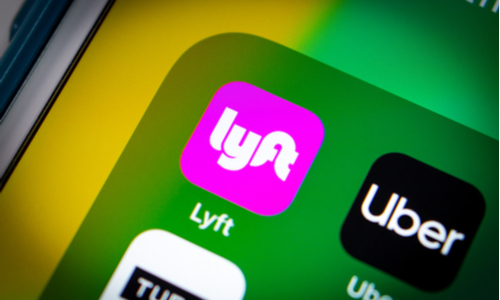
Lyft announced on Tuesday its commitment to ensuring weekly earnings for drivers, marking a significant departure from the conventional gig economy model. This initiative, the first of its kind, aims to attract more drivers to its platform, setting the stage for a potential transformation in how drivers are compensated, reported Reuters.
The ride-hailing sector in the United States has long been dominated by a duopoly between Lyft and its larger rival, Uber Technologies. With Lyft holding approximately 30% of the market share, the competition for both riders and drivers has been intense. Notably, data from last year revealed that around 15% of Lyft drivers across the nation earned less than 70% of the fares paid by riders after accounting for external fees.
Lyft’s pledge to bridge this earnings gap signifies a proactive step towards addressing concerns surrounding the financial stability of gig economy workers. Under this new scheme, if drivers fall short of earning 70% of the total fares at the end of a week, Lyft commits to compensating the difference, thereby ensuring that drivers receive a fair share of their earnings.
CEO David Risher, in an interview with Reuters, expressed optimism about the potential impact of this move on the entire sector. “We think hopefully it will get more drivers driving for Lyft, but also just make the whole sector stronger,” Risher stated, emphasizing the broader implications of Lyft’s initiative on the gig economy landscape.
Read more: New Suit Claims Uber & Lyft Violate Antitrust Laws
This development comes in the wake of a recent settlement between Uber and Lyft, wherein the companies agreed to pay $328 million to resolve allegations related to wage withholding and lack of paid sick leave for drivers in New York state. Such legal disputes underscore the growing scrutiny surrounding labor practices within the gig economy, prompting companies to reassess their policies regarding worker compensation and benefits.
Despite the potential increase in operational costs associated with this earnings guarantee, Risher reassured investors that Lyft remains well-positioned to absorb these expenses. He attributed part of the company’s financial preparedness to cost-saving measures implemented through restructuring efforts last year, emphasizing Lyft’s commitment to ensuring that drivers receive their fair share of earnings.
“We have more drivers now than we’ve had, I think, since the middle of 2019. It’s strong and I tell you what, it’s getting even stronger,” Risher commented, highlighting the positive trajectory of Lyft’s driver recruitment efforts amid a resurgence in demand for ride-hailing services.
As the gig economy continues to evolve, Lyft’s pioneering approach to driver compensation signals a broader shift towards prioritizing the financial well-being of gig workers.
Source: Reuters
Featured News
Big Tech Braces for Potential Changes Under a Second Trump Presidency
Nov 6, 2024 by
CPI
Trump’s Potential Shift in US Antitrust Policy Raises Questions for Big Tech and Mergers
Nov 6, 2024 by
CPI
EU Set to Fine Apple in First Major Enforcement of Digital Markets Act
Nov 5, 2024 by
CPI
Six Indicted in Federal Bid-Rigging Schemes Involving Government IT Contracts
Nov 5, 2024 by
CPI
Ireland Secures First €3 Billion Apple Tax Payment, Boosting Exchequer Funds
Nov 5, 2024 by
CPI
Antitrust Mix by CPI
Antitrust Chronicle® – Remedies Revisited
Oct 30, 2024 by
CPI
Fixing the Fix: Updating Policy on Merger Remedies
Oct 30, 2024 by
CPI
Methodology Matters: The 2017 FTC Remedies Study
Oct 30, 2024 by
CPI
U.S. v. AT&T: Five Lessons for Vertical Merger Enforcement
Oct 30, 2024 by
CPI
The Search for Antitrust Remedies in Tech Leads Beyond Antitrust
Oct 30, 2024 by
CPI